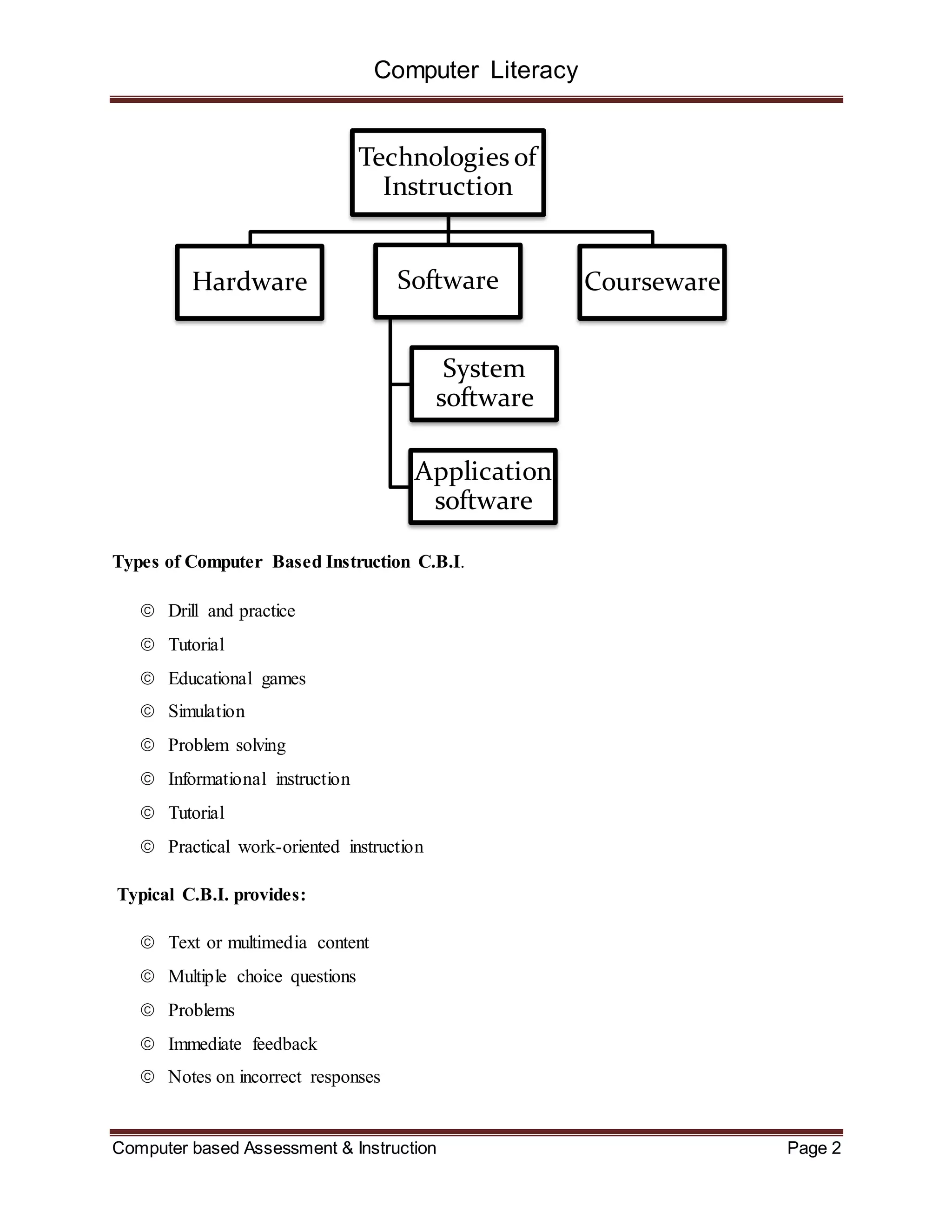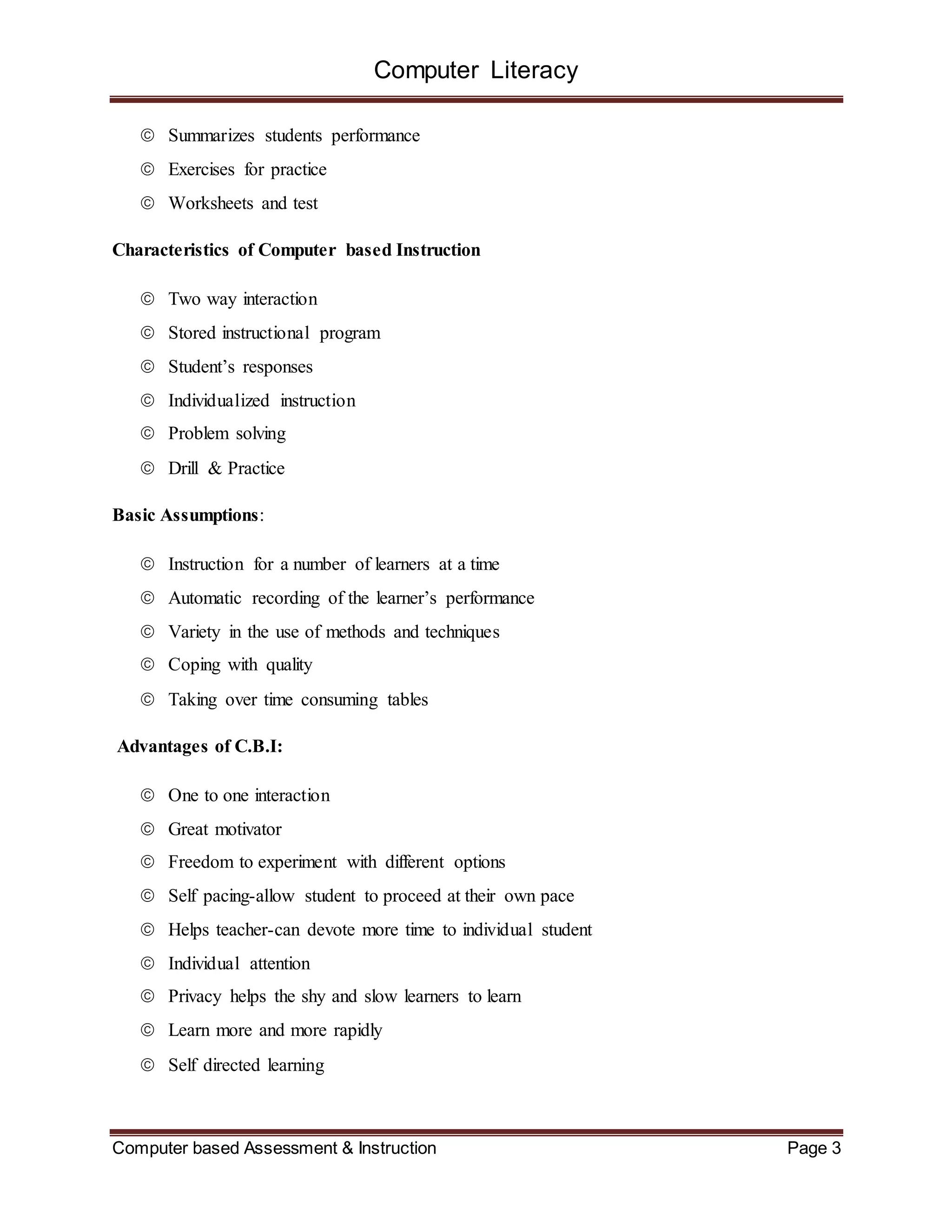Computer-Based Assessment (CBA) involves administering tests electronically, where responses are recorded and assessed digitally, often using computers, cell phones, or other electronic devices. Computer Based Instruction (CBI) refers to various types of education that utilize computers, including drill and practice, tutorials, educational games, simulations, and problem solving. CBI provides content, questions, feedback, and notes to students at their own pace. It allows for individualized instruction, practice, and assessment of student performance.



